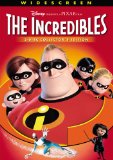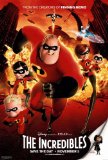We discussed the Story Question at the beginning of our series on plotting. The more we’ve discussed plotting, however, the more I realize I have more to say on this topic.
The first time we talked about it, we defined the story question like this (well, we’re using different emphasis this time):
The story question is the basic concept of the story. It’s asked (or hinted at) at the beginning of the story, and answered by the end. It’s the controlling, overarching action of the story.
 So how do we hint at the story question at the beginning, especially if we don’t plan to formally ask it until the Call to Adventure, or Plot Point #1?
So how do we hint at the story question at the beginning, especially if we don’t plan to formally ask it until the Call to Adventure, or Plot Point #1?
In all the plotting paradigms we’ve looked at, there’s a period at the beginning of the story where we get to see the character’s world: the Ordinary World, the Setup. Note that the three act, the five act and Brooks’s story structures all place the transition from this world at the 1/4 point, where we’re introduced to the BIG conflict.
But how can we introduce the story question in the beginning if we can’t actually “ask” it for some 25,000 words?
As we show the Ordinary World, we have to show something is wrong there—something is missing. Something is lacking—something that the conclusion of our story will bring to him or her.
If it’s a romance, we need to see in the beginning that the hero and heroine are lacking something—they’re alone. If it’s a mystery, we need to see a lack of justice (which an unsolved murder portrays nicely). Perhaps our main character is naive (or jaded), and the end of the story will bring knowledge or wisdom (or crack his hard exterior).
That doesn’t mean, however, that our characters have to spend the first quarter of the book whining about how lonely they are, and it doesn’t mean we have to wait until the 1/4 point to introduce them (conversely, we aren’t obligated to have them meet, sparks flying, on page 1, line 1).
We have to have conflict in the Ordinary World. If you’ll recall, in The Incredibles, this conflict related directly to the main plot—each member of the family was having a hard time, challenged by the Ordinary World. When we ask the story question (well, at each of the turning points), the stakes are raised for each member of the family.
This conflict in the Ordinary World should relate to the main plot. Imagine if we spend 25,000 words worrying about whether Pa’s crop will come in, and at the 1/4 turning point, we ask if Angelica can find true love. Can you imagine readers’ whiplash—and disappointment (or even outrage) that they just wasted X amount of time reading about something that has nothing to do with the story? That all those characters we cared about don’t matter anymore?
Even if we ask if Angelica can find Pa’s murderer, was the treatise on chopping cotton really necessary? Only if someone killed him for his crop, and even then, the first section might need to be adjusted a little to focus on the story question and not the agricultural practices of white sharecroppers in the 1930s.
What do you think? How have you set up your conflict before asking the story question?
Photo credits: question—Svilen Mushkatov


 A third way is to answer an intermediate question without satisfaction, making another answer (the story question) necessary. Maybe Horatio does with the Nobel Prize (because he passed off Jezebel’s work as his own, let’s say, and she is furious and leaves him and gets a lawyer). But even after he’s won, his life is empty. He misses her annotated love notes, her pocket protector, her obscure jokes. He tracks her down in her Antarctic research station, proclaims his love (and promises to publish the truth about her research).
A third way is to answer an intermediate question without satisfaction, making another answer (the story question) necessary. Maybe Horatio does with the Nobel Prize (because he passed off Jezebel’s work as his own, let’s say, and she is furious and leaves him and gets a lawyer). But even after he’s won, his life is empty. He misses her annotated love notes, her pocket protector, her obscure jokes. He tracks her down in her Antarctic research station, proclaims his love (and promises to publish the truth about her research).